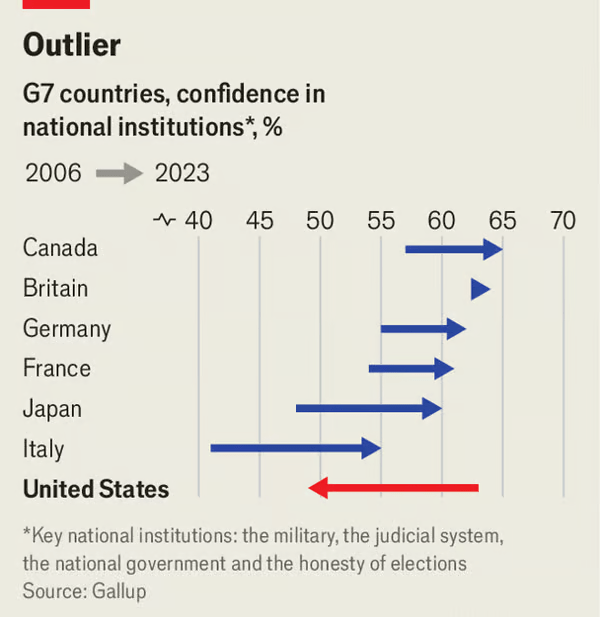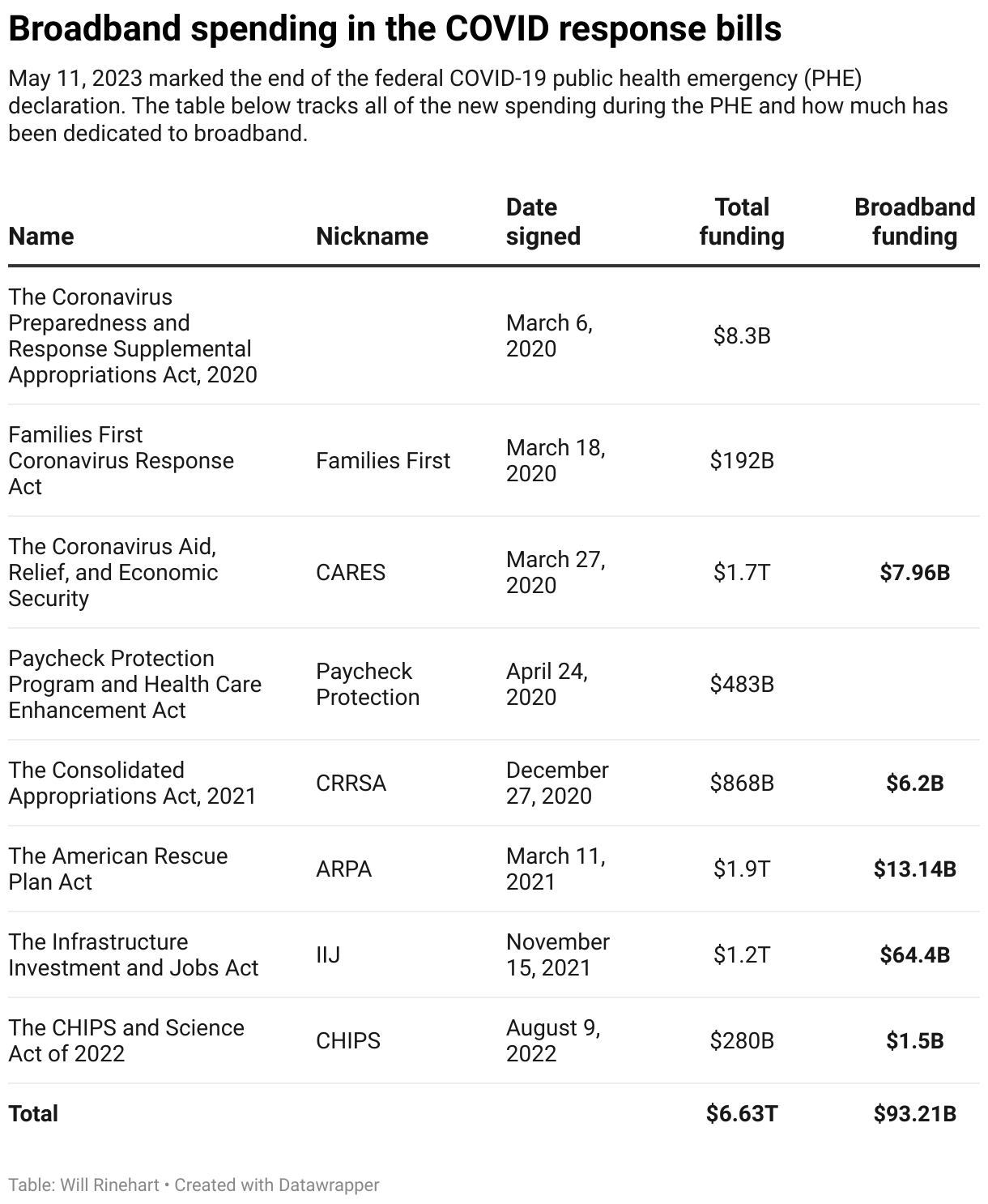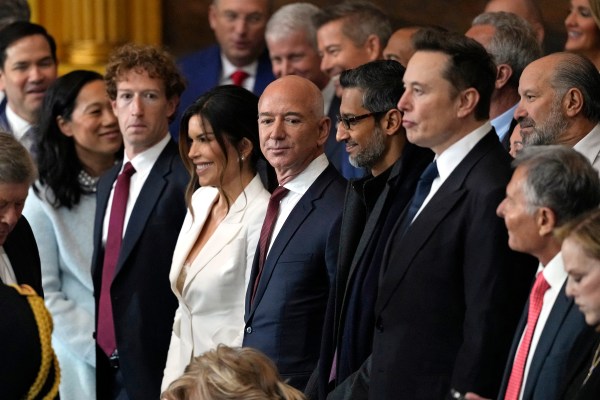Welcome back to Techne! For the last three months, I’ve been watching coverage of Japan’s sumo wrestling tournaments from NHK WORLD-JAPAN on YouTube, the official channel of the Japanese public broadcaster. Day 4 of the Grand Sumo Tournament just dropped.
Notes and Quotes
- A Techne reader sent this article: Repair work on three internet cables in the Red Sea damaged in February was recently stalled due to political disputes over access to Yemeni waters. This is further exacerbated by Houthi rebels’ control of a large part of Yemen’s Red Sea coast, including the key port of the Yemeni city of Al Hudaydah.
- My AEI colleague Todd Harrison released a report this week titled, “Building an Enduring Advantage in the Third Space Age.” It examines the U.S. advantages in the “third space age,” which include our free markets, an open society, and access to capital. He has also released a treasure trove of data through the Space Data Navigator.
- Relatedly, SpaceX is looking to build a launch facility at Florida’s Kennedy Space Center to support up to 44 Starship launches annually. That’s a lot of launches!
- The Reason Foundation’s Annual Privatization Report pointed out that “in Europe, 75 percent of passenger traffic goes through privatized airports. In Latin America and the Caribbean, it’s 66 percent. In Asia, it’s 47 percent. In the U.S., it’s less than 1 percent. This is a bad form of American exceptionalism.” Not only has privatization worked around the world (examples: Paris’ Charles de Gaulle Airport, London’s Heathrow, Frankfurt, and Cancún, Mexico), but privatized airports frequently rank at the top of surveys of the best airports in the world.

- The U.S. appears to be experiencing a book boom, with personal spending on recreational books reaching its highest level since 2006 in 2023 and continuing to rise. In 2023, this growth was driven by romance and fantasy books.

- Christopher Ferguson, a professor of psychology at Stetson University, argues in The Hill that efforts to block or ban social media under the guise of protecting teenage girls’ mental health are more driven by moral panic than by any demonstrated causation or correlation.
- Writer Jacob Siegel returned to The Fifth Column podcast, where he provided an in-depth analysis of the “Disinformation Industrial Complex,” Trump’s foreign policy approach, and whether his unified theory of censorship qualifies as a conspiracy theory. (Heads up, next week’s main essay will build off this conversation.)
- South Korea is gearing up to enter the semiconductor fray, announcing a substantial $7.3 billion support package to boost investments in the chip industry.
- The Biden administration is accelerating its regulatory efforts with several months remaining in the presidential term. In April, the administration saw a record number of major regulations reviewed, driven by concerns that a new administration could reverse these regulations using the Congressional Review Act.
- Apple recently announced a significant stock buyback and a dividend increase, boosting its share prices by about 10 percent.
- The Biden-Harris administration announced a preliminary memorandum with Polar Semiconductor—a foreign-owned company that is slated to transition to domestic ownership—to provide up to $120 million in federal incentives under the CHIPS Act and expand domestic manufacturing capabilities.
What’s Next for the Affordable Connectivity Program?

This month, the Federal Communications Commission (FCC) began formally winding down the Affordable Connectivity Program (ACP), thus ending a subsidy program that supported 23 million households in paying for internet service. Although a bipartisan push to extend the program failed when the funding wasn’t attached to the reauthorization of the Federal Aviation Administration, there’s still a glimmer of hope for its supporters: the Spectrum and National Security Act, currently pending in the Senate, would fund the program with another $7 billion. This bill renews the FCC’s lapsed authority to auction off spectrum bands to commercial operators like Verizon and AT&T. The funds raised from these auctions would be allocated to support the ACP for another year. So even if it passes, ACP has another year at best. A long-term solution, one that is sustainable, is needed.
But let’s take a step back. In December of 2020, Congress set aside $14.5 billion for the ACP as part of the Infrastructure Investment and Jobs Act (IIJA). In a way, it had stumbled into a policy of universal broadband service without really designing it—which is not unheard of historically. Just as with the telephone a century ago and now with internet access, there is a long record of government programs and regulations aimed at providing everyone access to communication services. That was the case here as well. But since ACP appears to be winding down, now’s a good time to better understand what should be accomplished with this kind of program.
The COVID broadband bump.
COVID acted as a massive demand shock for broadband. Kids and adults were sent home to study and work, so they had to use the internet. But the days of just being online for class or work are over. The demand shock has subsided. Growth rates dropped to pre-pandemic levels. A new equilibrium has emerged.
The Leichtman Research Group, an economic research firm focused on the broadband ecosystem, has been tracking this change in its quarterly Research Note. As it explained in the Q4 2021 edition, “In 2020, the top broadband providers added nearly 4.9 million subscribers, the most in any year since 2008.” The organization was right to point out that “the pandemic tended to accelerate the pace of change, creating an aberrational ‘pull-forward impact’ on consumer behaviors and subscriptions, which in some cases are beginning to readjust.” The demand shock created by the pandemic acted as an aberrational pull-forward event.
COVID also persuaded Congress to spend massively on broadband. The Coronavirus Aid, Relief, and Economic Security (CARES) Act was the first of the COVID relief bills to support broadband. A good chunk of the $2.2 trillion economic stimulus bill passed by the 116th Congress and signed into law by President Donald Trump went to states to spend as they wished. And states spent the money on broadband. My tally of those state programs indicates that about $7.9 billion went to various broadband programs, like Alabama’s broadband voucher program and California’s distance learning program. My best guess is that about $93.2 billion was directed toward other various broadband projects and programs, which include both the Affordable Connectivity Program and its predecessor, the Emergency Broadband Benefit (EBB).

Speaking of, the EBB was historic in just how generous it was. It provided households up to $50 per month for broadband service of their choosing, and those living on tribal lands could receive enhanced support of up to $75 per month. The program also provided a one-time device discount of up to $100 for a laptop, desktop computer, or tablet purchased through a participating provider.
The FCC also administers the Lifeline program through the FCC-created Universal Service Administrative Company (USAC). This program grants qualified subscribers discounts on monthly services such as telephone, broadband internet, or bundled voice and broadband plans from participating wireline or wireless providers. But that monthly benefit is just $9.25 per month for eligible, low-income subscribers, and $34.25 per month for eligible subscribers on tribal lands. And just as important, the Lifeline is further constrained by only being offered by participating providers.
The EBB was funded through a dedicated line of $3.14 billion in the Consolidated Appropriations Act, which was signed in December 2020. Two months later, the FCC released a report and order that established the EBB, laid out the program’s rules, and delegated the authority to USAC to administer the monies and provide oversight. In May 2021, EBB was opened to households and USAC began releasing data via an enrollment and claims tracker.
But it was already evident that the money for EBB would run out. So as part of the infrastructure bill, the Affordable Connectivity Program (ACP) was funded to replace the EBB—to the tune of $14.2 billion. The ACP benefit was smaller. It provided a discount of up to $30 per month toward internet service for eligible households and up to $75 per month for households on qualifying tribal lands. On December 31, 2021, the ACP took over, the details of which can be found in the ACP claims tracker. By February 2024, as it became clear that an extension of the program was unlikely, there was an enrollment freeze. At its peak, the program supported 23,269,550 households.
The pandemic highlighted the essential nature of reliable internet service, not just for the temporary circumstances of lockdowns but as a permanent fixture in modern life. Spurred by those COVID experiences, the concept has gained new significance among broadband access advocates, who again see their work as a continuation of a push for widespread, affordable access to communication services.
The political economics of universal service.
Universal service is an old idea in communications policy, and the single best book to understand it is Milton Mueller’s aptly named Universal Service: Competition, Interconnection and Monopoly in the Making of the American Telephone System. Its second chapter’s opening paragraphs discuss telephone service, but the story can just as easily apply to broadband access. Mueller writes:
Universal Service entered the vocabulary of American telecommunications in 1907. The slogan “one system, one policy, universal service” was coined by Theodore Vail, the President of AT&T, and propagated in the company’s annual reports from 1907 to 1914. Its appearance came, as we shall see later, at the peak of a fierce competitive struggle between the Bell system and thousands of independent telephone companies. The idea of universal service served as the linchpin of the Bell system’s argument for transforming the telephone industry into a regulated monopoly. The emergence of the concept thus marked an important turning point in the history of American telecommunications.
Most historians and policy makers believe that when Vail invoked universal service he meant the same thing we mean by it today: regulatory policies to promote the affordability of telephone service through cross subsidies. This book disputes that widely-accepted view. There is, it argues, an important difference between Vail’s concept of universal service in 1907 and the conception prevailing now. Understanding that difference is what this book is all about. At stake is not simply a question of historical semantics, but a far-reaching reinterpretation of the history of telecommunications with significant implications for current and future telecommunications policies.
In contemporary discourse, universal service policy is synonymous with government policies to promote the affordability of telephone service and access to the network. Sometimes this means direct subsidies to telecommunications construction in remote areas, such as the Rural Electrification Administration loan program. More commonly, it refers to attempts to maintain affordable local rates by means of rate averaging and cross-subsidies within the nation’s telecommunications system. This might mean, for example, imposing higher charges on long-distance users in order to reduce charges for basic local telephone service for households. Or it might mean charging the same rates for a long-distance call between two small, remote towns in Montana as for calls between Philadelphia and New York, when in fact economies of scale make calls between the latter two high-traffic centers far less expensive than the former. Whatever the mechanism, pushing telephone penetration towards 100 percent is seen as a policy goal of sufficient importance to justify various forms of public intervention in the industry. Underlying all these policies is the assumption that without active government intervention, access to telecommunications would be well below the socially optimal level.
The petering out of the ACP again brings this question to Congress. Absent government intervention, is broadband access well below the socially optimal level? Congress has the chance to actually think through what it wants to accomplish. Its members also have the chance to learn from what has already happened.
There is no denying that some families will lose tremendously from this program shutting down. But the establishment of the EBB, the switchover to the ACP, and then the shutdown of the program is an unparalleled event that needs to be studied. (Which I hope to do in future Techne editions, especially by looking at this entire saga as a social experiment to better understand how a broadband subsidy program might work in practice.)
In the meantime, one thing to watch will be the switchover back to the Lifeline program and low-cost offerings. Lifeline was created in 1985 and reorganized following the 1996 Telecommunications Act. It was then that the Lifeline program was bundled with three other new programs to help support the communication needs of low-income families, rural and high-cost areas, rural health care facilities, and schools and libraries. Together, these programs are today called the Universal Service Fund. Since its inception, the USF has been paid for by a contribution pool of long-distance wired and wireless telephone customers. But as consumers have moved away from landline telephone services and adopted wireless phones and broadband connections for cheaper long-distance communication, the fund has come under financial pressures. The EBB and the ACP relieved some of those pressures because households switched to those programs, but we should expect more pressure in the future on the Universal Service Fund as people switch back.
A recent op-ed from former FCC economists Gregory Rosston and Bradley Wimmer explains what this means in practice:
Prior to the ACP, ISPs offered low-priced service plans to qualifying low-income households without government subsidy. For example, Comcast’s Internet Essentials Plan cost low-income households $9.95 per month and the Spectrum Assist plan cost $24.99 per month (and was lower before pandemic-era subsidies). Unsubsidized low-income programs deliver speeds up to 100 megabits per second (Mbps), but many are in the 25 – 50 Mbps range. Most of these plans are available today, but are not widely used because low-income households enroll in plans designed for households that receive ACP subsidies.
At the end of the day, a lot of fundamental work needs to be conducted to even begin to fill in the details. Stay tuned for more on this front.
Until next week,
🚀 Will
AI Roundup
- OpenAI’s new GPT-4o model, which understands speech and responds without having to transcribe, just dropped. I have played around with it and it is still a little clunky, but we are getting closer to the world of Her, of real-time interaction with an artificial agent. The model includes so much more though. Here are some technical details.
- A guide to automating the social science research cycle, “Automated Social Science.”
- Marc Andreessen explains why there might be a Jevons paradox when it comes to AI, suggesting that building companies will become more expensive in the AI era.
- Utilizing ChatGPT assistance resulted in lower performance among test takers in solving mathematical problems, according to a controlled lab study.
- Headlines about artificial intelligence are overwhelmingly negative, according to this analysis of 70,000 articles.
Research and Reports
- U.S. manufacturing sales have become more concentrated among a few domestic firms, but foreign companies have gained a larger market share through increased imports, according to a report from the New York Fed. This shift has pushed smaller, less efficient U.S. manufacturers out of the market.
- People tend to think of others as consumers, rather than as consumers as well as producers, which leads to efficiency neglect. As a new report from the American Psychological Association on this topic explains, “people intuitively focus on increased demand while neglecting the changes in production efficiency that occur alongside, and often in response to, increased demand.” This leads to belief that population growth is an increasing distribution struggle for goods and services.






Please note that we at The Dispatch hold ourselves, our work, and our commenters to a higher standard than other places on the internet. We welcome comments that foster genuine debate or discussion—including comments critical of us or our work—but responses that include ad hominem attacks on fellow Dispatch members or are intended to stoke fear and anger may be moderated.
With your membership, you only have the ability to comment on The Morning Dispatch articles. Consider upgrading to join the conversation everywhere.